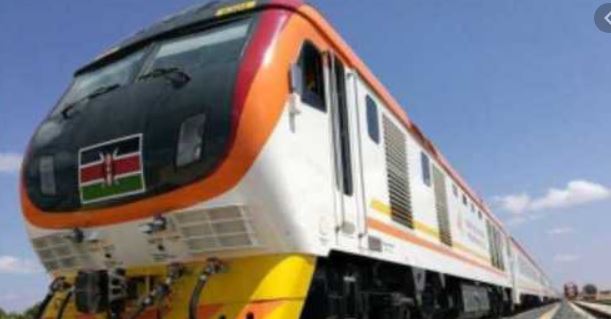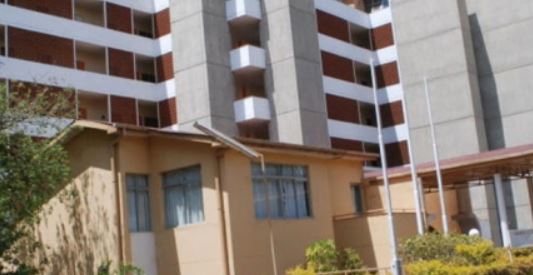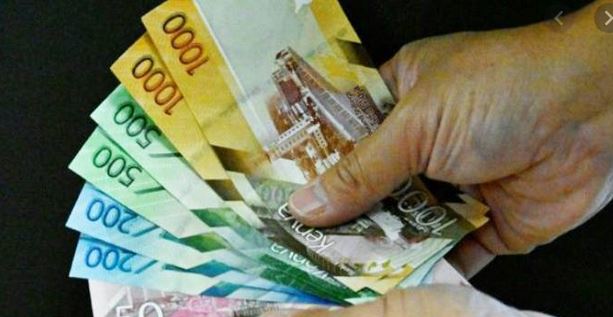
NAIROBI, KENYA: Standard Gauge Railway ferried less than 10,000 passengers in the second quarter of the year pointing to the adverse effects of Covid-19 to the transporter.
According to data by the Kenya National Bureau of Statistics, the number of passengers by SGR declined to 6,363 in the review period from 408,931 recorded in the second quarter of 2019.
The transportation and storage sector is estimated to have contracted by 11.6 per cent in the second quarter of 2020 compared to 7.6 per cent growth in the corresponding quarter of 2019.
In the review period, restriction of movements resulted in a significant decline in travel activities thereby impacting negatively the sector’s performance.
Kenya Railways suspended Madaraka Express trains in April after President Uhuru Kenyatta ordered cessation of movements into and out of four counties of Mombasa, Kilifi, Kwale, and Nairobi.
The new measures were meant to combat the spread of Coronavirus in the country. It resumed the passenger services in July amid enhanced Covid-19 prevention measures.
Launched on May 31, 2017, the SGR passenger service, also known as "Madaraka Express," had transported over 4.3 million passengers by April 6, reaffirming its popularity among business and leisure travelers.
SGR freight services continued despite the pandemic, freight movement through Standard Gauge Railway (SGR) rose by 3.9 per cent to stand at 1,053 thousand metric tonnes.
The quarter under review recorded a dramatic reduction in the number of visitor arrivals through Jomo Kenyatta International Airport (99.5 per cent) and Moi International Airport (99.9 per cent); mainly as a result of the near cessation of international flights.
Depression of activities of transportation and storage was reflected in declined consumption of light diesel, a major input to transportation activities, which contracted by 32.4 per cent compared to marginal growth of 0.2 per cent in the corresponding quarter of 2019.
Sectoral Analysis
Agriculture, Forestry, and Fishing

Agriculture, Forestry and Fishing activities recorded a growth of 6.4 per cent in the second quarter of 2020 compared to 2.9 per cent growth in the corresponding quarter of 2019.The sector’s performance was supported by a notable increase in tea production, cane deliveries, milk intake and fruit exports. Tea production increased by 34.5 per cent from 106,314 metric tonnes in the second quarter of 2019 to 143,037 metric tonnes in the review period. Fruit exports increased by 34.8 per cent to stand at 35,531 metric tonnes in the second quarter of 2020. Cane deliveries increased from 972.1 thousand metric tonnes in the second quarter of 2019 to stand at 1,666 thousand metric tonnes in the review period.
Milk intake increased by 6.0 per cent in the review period from 142.08 million litres in the second quarter of 2019 to 151.21 million litres.
However, the sector recorded a decline in production in several activities such as coffee sales and horticultural exports. The volume of cut flowers and vegetables exported contracted by 34.5 per cent and 14.8 per cent respectively.
Manufacturing

The manufacturing sector reported a contraction of 3.9 per cent in the second quarter of 2020 compared to an expansion of 4.0 per cent in the same period of 2019. Manufacture of food which includes beverages, meat, and meat products among others recorded a contraction of 2.5 per cent during the review period. Notably, processing and preservation of meat; manufacture of bakery products; manufacture of tobacco products, manufacture of beer; all registered a contraction. Similarly, non-food products contracted by 4.9 per cent in the second quarter of 2020. This was evidenced by a contraction in the assembly of motor vehicles and the manufacture of galvanized iron sheets. Credit advanced to manufacturing sector expanded by 16.9per cent in the second quarter of 2020compared to 8.6 per cent growth in the corresponding quarter of 2019.
Stay informed. Subscribe to our newsletter
Construction

The sector recorded a slowed growth of 3.9 per cent in the second quarter of 2020 compared to 7.2 per cent growth in the second quarter of 2019. Cement consumption increased from 1,454.0 thousand metric tonnes in the second quarter of 2019 to 1,521.0 thousand metric tonnes in the second quarter of 2020. Credit advanced to the construction sector expanded by 6.0 per cent in the review period compared to a 5.6 per cent contraction in the second quarter of 2019 to stand at Sh347.6 billion.
Electricity and Water Supply
Activities of Electricity and Water supply contracted by 0.6 per cent in the review period compared to an expansion of7.3 per cent in the corresponding quarter of 2019. The contraction was notable in total electricity generated which declined by6.1 per cent in the review period. Electricity generated from wind contracted by 29.3 per cent to stand at 282.1 million-kilowatt. The decline was mainly attributed to the low demand for electricity during the review period. Conversely, the growth in the sector was partly buoyed by an increase in hydro-electricity generation which expanded by 34.5per cent on account of sufficient rains received during this period under review.
Accommodation and Food Services

Accommodation and food services activities contracted by 83.3 per cent in the quarter under review compared to an expansion of 12.1 per cent growth in the corresponding quarter of 2019. This sector was the worst hit by the COVID-19 pandemic as businesses in the accommodation and food services sector either operated under minimum capacity or completely closed down. The significantly reduced number of visitors’ arrivals, as well as restrictions of movement within the country adversely, affected the sector’s performance.
Besides, the fear of contracting the virus by individuals led to people avoiding hotels and restaurants further affecting its performance negatively.
Financial and Insurance

During the period under review, financial and Insurance grew by 4.2 per cent compared to 5.2 per cent in the second Quarter of 2019. Broad money supply expanded from Sh3,564.2 billion as of June 2019 to Sh 3,863.6 billion as at June 2020.
Net foreign assets reduced from Sh 939.9 billion as at June 2019 to Sh 885.4 billion as at June 2020.Total domestic credit and credit to the private sector expanded by 11.9 per cent and 7.67 per cent to Sh 3.905.7 billion and Sh2,695.03 billion in June 2020 following accommodative monetary policy stance in the first quarter 2020.
The Central Bank of Kenya (CBK) in efforts to support the economy further, lowered the Central Bank Rate (CBR) from 7.25 per cent in March 2020 to 7.0 per cent in April 2020 and maintained at the same level throughout the quarter.
This in comparison to 9.00 per cent in June 2019.
 The Standard Group Plc is a
multi-media organization with investments in media platforms spanning newspaper
print operations, television, radio broadcasting, digital and online services. The
Standard Group is recognized as a leading multi-media house in Kenya with a key
influence in matters of national and international interest.
The Standard Group Plc is a
multi-media organization with investments in media platforms spanning newspaper
print operations, television, radio broadcasting, digital and online services. The
Standard Group is recognized as a leading multi-media house in Kenya with a key
influence in matters of national and international interest.
 The Standard Group Plc is a
multi-media organization with investments in media platforms spanning newspaper
print operations, television, radio broadcasting, digital and online services. The
Standard Group is recognized as a leading multi-media house in Kenya with a key
influence in matters of national and international interest.
The Standard Group Plc is a
multi-media organization with investments in media platforms spanning newspaper
print operations, television, radio broadcasting, digital and online services. The
Standard Group is recognized as a leading multi-media house in Kenya with a key
influence in matters of national and international interest.














